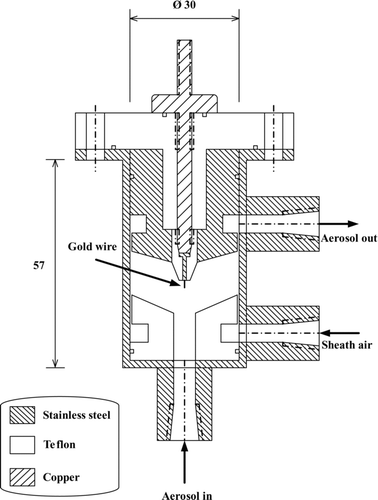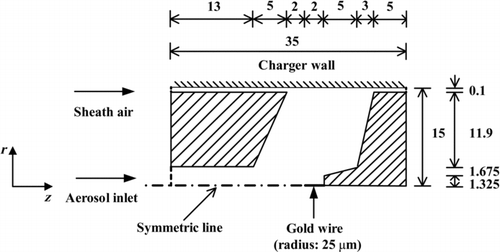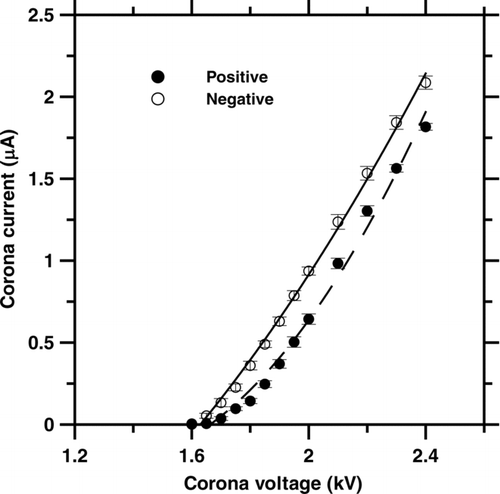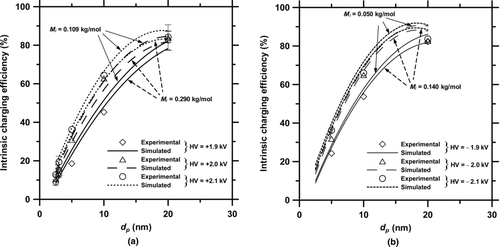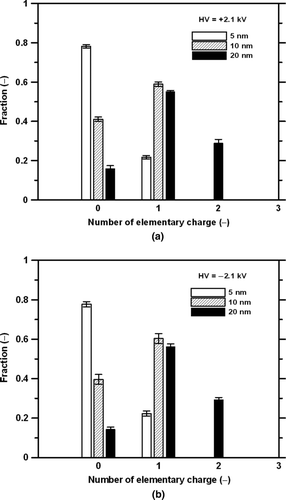Figures & data
FIG. 2 Schematic diagram of the experimental setup (HEPA, high efficiency particulate air; HV, high voltage).
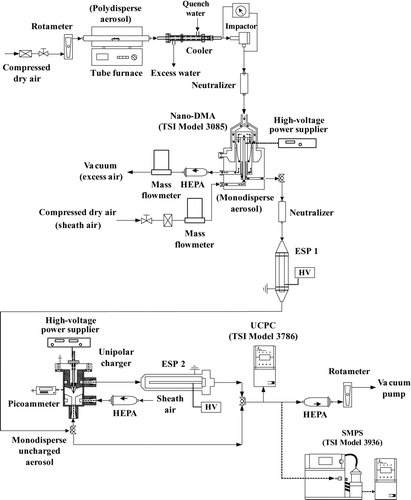
FIG. 5 (a) Experimental extrinsic charging efficiency and (b) electrostatic loss of 20-nm particles versus corona voltage at different sheath airflow rates.
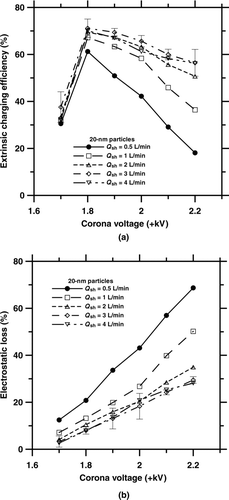
FIG. 6 Comparison of the extrinsic charging efficiencies of the present charger with those of previous corona-based chargers.
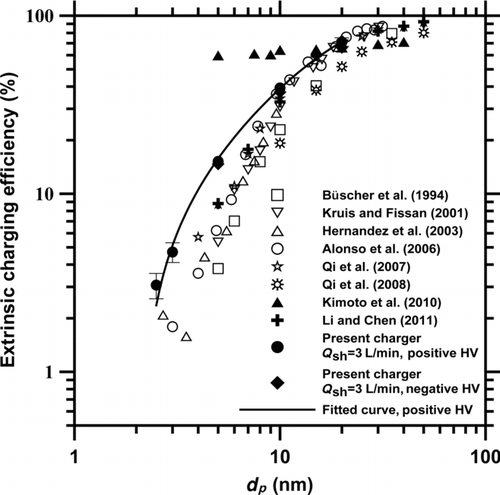
FIG. 7 (a) Flow streamlines, (b) electric potential field, (c) electric potential field near the discharge wire, and (d) ion concentration field at Q sh = 3 L/min in the present charger. The applied voltage is −2.1 kV. (Color figure available online.)

FIG. 8 Number concentration field of 20 nm particles carrying 0–2 charges in the present charger when the applied voltage was −2.1 kV at Q sh = 3 L/min. (a) 0 charge, (b) 1 charge, (c) 2 charges. (Color figure available online.)

FIG. 9 Comparison of the extrinsic charging efficiency of the present charger between the numerical results and experimental data at Q sh = 3 L/min. (a) Positive voltage, (b) negative voltage.
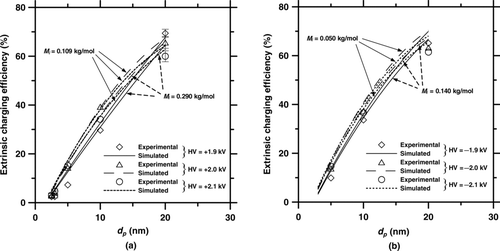
FIG. 10 Comparison of the electrostatic loss of the present charger between the numerical results and experimental data at Q sh = 3 L/min. (a) Positive voltage, (b) negative voltage.

